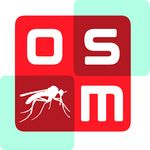OpenSourceMalaria:Triazolopyrazine (TP) Series: Difference between revisions
Matthew Todd (talk | contribs) |
Matthew Todd (talk | contribs) (→Preamble: added launch date) |
||
| Line 7: | Line 7: | ||
===Preamble=== | ===Preamble=== | ||
This series of compounds arises from industrial work that cannot be fully disclosed, followed by some hit-to-lead work funded directly by MMV which can. The series is based on a triazolopyrazine core. There is evidence from parasite ion regulation assays that these compounds may be PfATP4 inhibitors. OSM started to look at this series following a decision by MMV to release their data into the public domain. | This series of compounds arises from industrial work that cannot be fully disclosed, followed by some hit-to-lead work funded directly by MMV which can. The series is based on a triazolopyrazine core. There is evidence from parasite ion regulation assays that these compounds may be PfATP4 inhibitors. OSM started to look at this series following a decision by MMV to release their data into the public domain. This series was officially launched as part of OSM on September 10th 2013. | ||
===Current Aims=== | ===Current Aims=== | ||
Revision as of 01:04, 10 September 2013
Open Source Malaria Series 4: The Triazolopyrazine (TP) Series
Introduction
Preamble
This series of compounds arises from industrial work that cannot be fully disclosed, followed by some hit-to-lead work funded directly by MMV which can. The series is based on a triazolopyrazine core. There is evidence from parasite ion regulation assays that these compounds may be PfATP4 inhibitors. OSM started to look at this series following a decision by MMV to release their data into the public domain. This series was officially launched as part of OSM on September 10th 2013.
Current Aims
Further hit-to-lead work. Validate PfATP4 activity. Improve potency and drug likeness.
Prior Knowledge of the Series
Potency of Hits and Analogs
Possible PfATP4 Activity Deduced from Parasite Ion Regulation Assays
The following five compounds were evaluated in parasite ion regulation assays in the Kirk Laboratory; the hypothesis is that PfATP4 is a Na+ ATPase that exports Na+ and imports H+ (or equivalent) and that the effects of the compounds on Na+ concentration and pH are attributable to inhibition of this activity. Structures, potency, metabolism/solubility and raw PfATP4 assay data are here.

MMV669000: no (potency: inactive)
MMV669304: yes (potency: 280 nM)
MMV669360: yes (potency: 356 nM)
MMV669542: yes (potency: 185 nM)
MMV669848: yes (potency: 114 nM)
MMV669000 did not dissipate the plasma membrane Na+ gradient or increase the plasma membrane pH gradient consistent with it not inhibiting PfATP4 at the concentration tested.
The other compounds dissipated the plasma membrane Na+ gradient and increased the plasma membrane pH gradient at a concentration of 2 μM, consistent with them being PfATP4 inhibitors.
(i.e. note the correlation: compound inactive in these assays is the inactive analog in the plasmodium screen)
Strings
MMV669000: O=C(N1CC(C=CC=C2)=C2C1)C3=CN=CC4=NN=C(C5=CC=C(OC(F)F)C=C5)N43; InChI=1S/C21H15F2N5O2/c22-21(23)30-16-7-5-13(6-8-16)19-26-25-18-10-24-9-17(28(18)19)20(29)27-11-14-3-1-2-4-15(14)12-27/h1-10,21H,11-12H2
MMV669304: FC(F)OC(C=C1)=CC=C1C2=NN=C3C=NC=C(CCCC4=CC=CC=C4)N32; InChI=1S/C21H18F2N4O/c22-21(23)28-18-11-9-16(10-12-18)20-26-25-19-14-24-13-17(27(19)20)8-4-7-15-5-2-1-3-6-15/h1-3,5-6,9-14,21H,4,7-8H2
MMV669360: FC(F)OC(C=C1)=CC=C1C2=NN=C3C=NC=C(COCC4=CC=C(F)C(F)=C4)N32; InChI=1S/C20H14F4N4O2/c21-16-6-1-12(7-17(16)22)10-29-11-14-8-25-9-18-26-27-19(28(14)18)13-2-4-15(5-3-13)30-20(23)24/h1-9,20H,10-11H2
MMV669542: FC(F)OC(C=C1)=CC=C1C2=NN=C3C=NC=C(C(NC4=CC=CC(Cl)=C4)=O)N32; InChI=1S/C19H12ClF2N5O2/c20-12-2-1-3-13(8-12)24-18(28)15-9-23-10-16-25-26-17(27(15)16)11-4-6-14(7-5-11)29-19(21)22/h1-10,19H,(H,24,28)
MMV669848: FC(F)OC(C=C1)=CC=C1C2=NN=C3C=NC=C(CN4CC(C=CC=C5)=C5C4)N32; InChI=1S/C21H17F2N5O/c22-21(23)29-18-7-5-14(6-8-18)20-26-25-19-10-24-9-17(28(19)20)13-27-11-15-3-1-2-4-16(15)12-27/h1-10,21H,11-13H2
